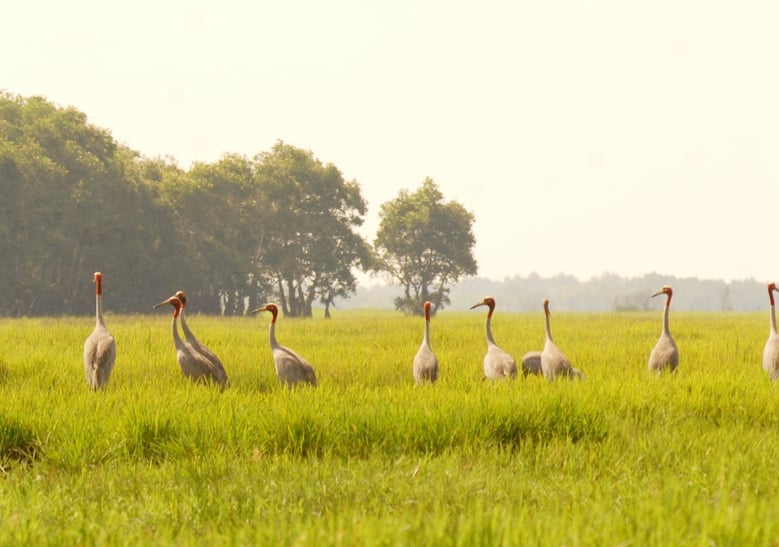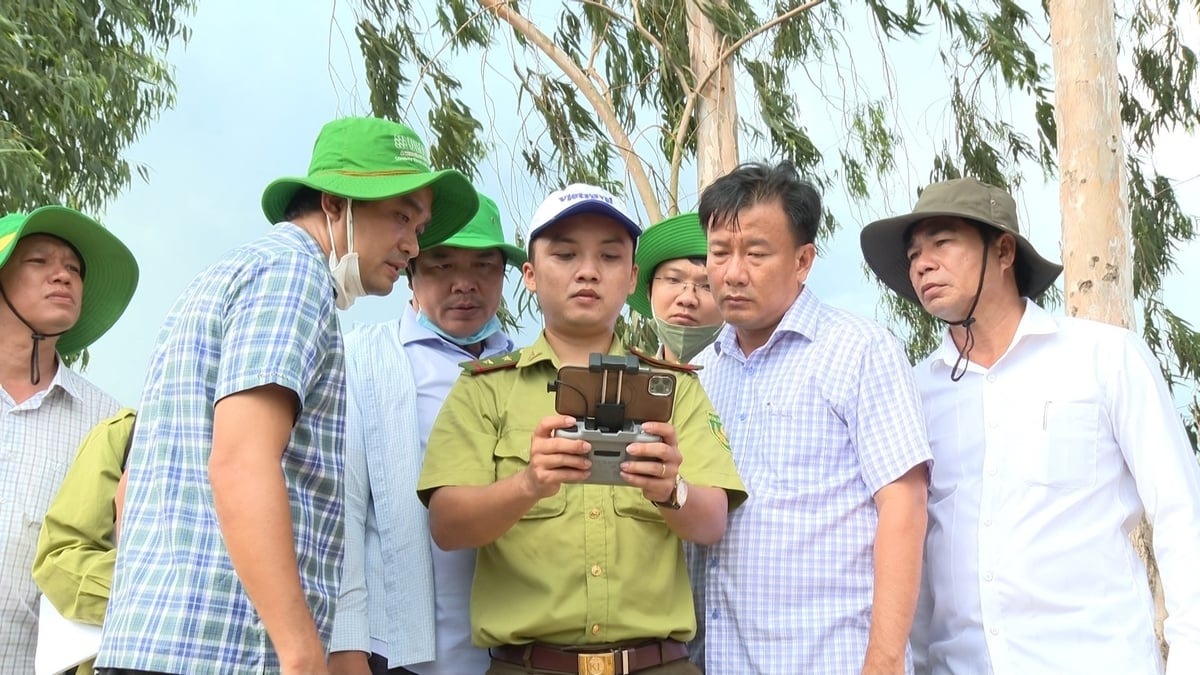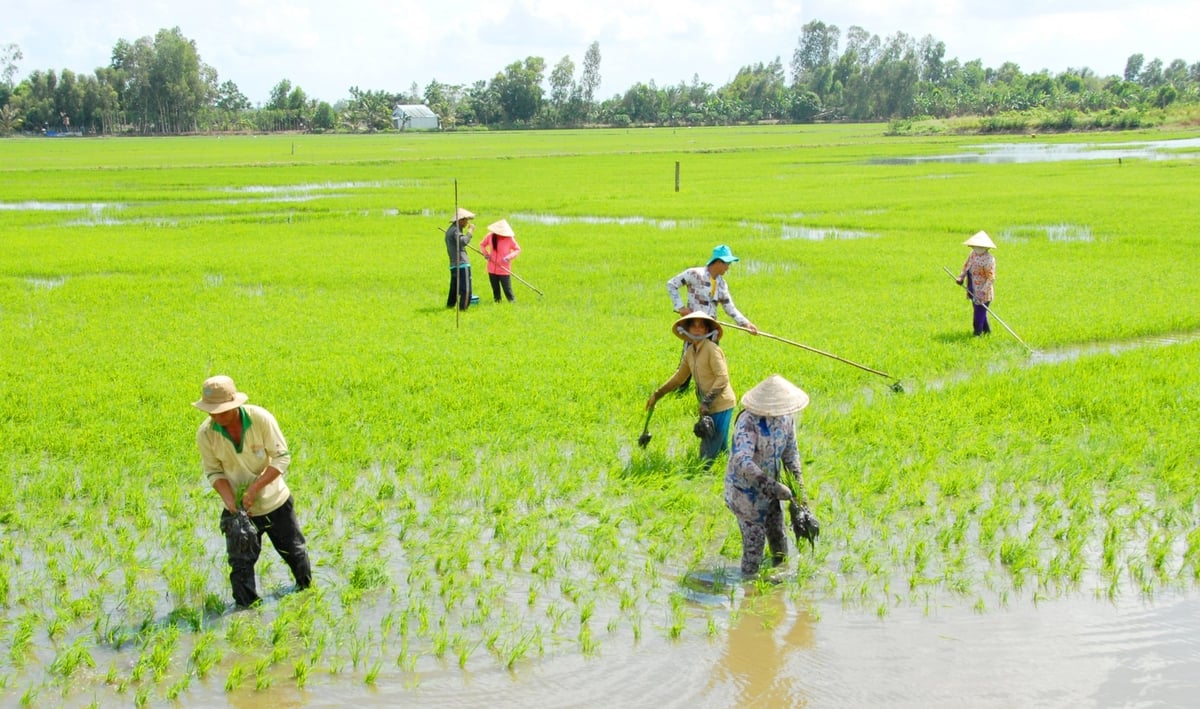November 16, 2025 | 03:43 GMT +7
November 16, 2025 | 03:43 GMT +7
Hotline: 0913.378.918
November 16, 2025 | 03:43 GMT +7
Hotline: 0913.378.918
Tram Chim National Park, one of the few remaining wetland areas in the Dong Thap Muoi region of Dong Thap Province, is expected to become a permanent home for the red-crowned crane, a rare bird species listed in the IUCN Red List. Under a 10-year crane conservation project, the park is gradually restoring its natural ecosystem and preparing the best conditions for the cranes to live there year-round.
Mr. Nguyen Van Lam, Director of Tram Chim National Park, shared: "The red-crowned crane is closely tied to the wetland grassland ecosystem. Due to changes in hydrology and human intervention, many characteristic habitats, such as Eleocharis and wild rice, have degraded. If we want the red-crowned crane to return, we must first revive the grasslands within Tram Chim National Park."

A flock of rare red-crowned cranes has reappeared in Subzone A5 of Tram Chim National Park after many years of absence. Photo: Le Hoang Vu.
To that end, the park has implemented a range of habitat restoration measures, including regulating water levels appropriately, controlling competing species, and tilling the soil to support the growth of Eleocharis and other tuber-producing plants - the crane’s preferred food source.
The park's technical team is also restoring other native plant species, such as yellow-spike flowers and wild rice, in addition to Eleocharis. The wetland landscape of Dong Thap Muoi is gradually returning, laying a solid foundation for the revival and flourishing of the red-crowned crane population.

Officers of Tram Chim National Park collaborate with specialized units to monitor ecosystem dynamics using unmanned aerial vehicles (drones). Photo: Le Hoang Vu.
Mr. Nguyen Van Man, a farmer in Tram Chim commune, shared: "Previously, I used to broadcast 20 kg of rice seeds per công and burned the rice straw after harvest. Now, under the ecological model, I no longer use chemical fertilizers and pesticides but have switched to organic and biological products. In rice cultivation, instead of sowing 17 - 20 kg of seeds per công as before, I’ve reduced it to only 10 kg per công. At the same time, I treat straw with biological agents, which reduces labor while the rice still grows well, with fewer pests and diseases, and helps protect the environment. This has allowed my family to cut production costs by about 15 - 20% compared to traditional farming methods.”
Currently, rice farmers living around the buffer zone of Tram Chim National Park see the ecological rice fields not only as a way to protect water resources but also as an expanded habitat for wild birds, including the red-crowned crane.
Mr. Cao Thai Phong said that over the next 10 years, Tram Chim aims to breed and release at least 100 red-crowned cranes, with the hope that more than 50 will adapt and survive in the wild, forming a sustainable breeding population. The crane care team at the park is managing a special diet for each individual, including pellet feed and natural foods like small fish, crickets, mealworms, and water chestnuts. Thanks to this, the cranes have started adapting to a semi-wild environment, preparing for their reintroduction into the wild.

Farmers in the buffer zone of Tram Chim National Park practice ecological rice farming, contributing to the conservation of the red-crowned crane’s habitat. Photo: Le Hoang Vu.
Nevertheless, Mr. Phong acknowledged that there are still many challenges in managing and protecting the red-crowned cranes. At present, mobilizing socialized funding has not met the proposed needs, while illegal exploitation of natural resources in the area continues. In addition, attracting experts remains difficult due to the lack of appealing support mechanisms and incentives.
In the near future, Dong Thap province plans to strengthen the steering committee for the conservation project, prepare to receive the second group of red-crowned cranes expected to arrive in 2026, and intensify specialized training for the local team. The province also aims to invite international experts for on-site capacity building to ensure more effective program implementation.
To support green and sustainable development, especially efforts to conserve and restore red-crowned crane populations at Tram Chim National Park, Dong Thap's authorities urged farmers to actively transition from conventional rice farming to ecological and organic methods.
In revitalizing red-crowned crane population, Dong Thap Provincial People’s Committee is partnering with the Zoological Park Organization of Thailand (ZPOT), the Vietnam Zoos Association (VZA), the International Crane Foundation (ICF), and the Saigon Zoo and Botanical Gardens Company Limited.
Translated by Kieu Chi

(VAN) The newly-launched project IFIA will be implemented during 2025-2030 in Tra Vinh and Ben Tre (Vinh Long now).

(VAN) An Giang identifies science and technology as the solid foundation for green, high-quality, low-emission agriculture, serving as a driving force for sustainable development in the new era.

(VAN) The Research Institute for Aquaculture No. III (RIA 3) is pioneering research and technology transfer of advanced marine breeding stocks and farming techniques, making a vital contribution to realizing the National Marine Aquaculture Strategy.
/2025/11/14/1144-0-nongnghiep-231139.jpg)
(VAN) Ban Bo commune (Lai Chau province), located in the buffer zone of Hoang Lien National Park, always pays attention to communication to ensure local residents comply with legal regulations on forest management and protection.

(VAN) The Mekong Delta is shifting toward circular and low-emission cultivation to protect coconut yields, quality, and competitiveness in global markets.

(VAN) From the love for their homeland, young people in Moc Chau established a cooperative, bringing the enthusiasm of the Youth Union into developing modern and sustainable agriculture.
/2025/11/15/1235-1-100331_814.jpg)
(VAN) Over three decades of partnership, WWF-Viet Nam has aligned itself with the 80-year journey toward sustainable development of the Ministry of Agriculture and Environment, continuing the aspiration to preserve nature.